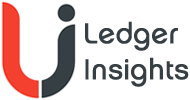Over the last few years, financial institutions around the world have embraced tokenization for capital market asset management. Kelvin Li, Head of Platform Tech and Jessica Cao, Head of International Financial Institutions Partnerships at Ant International, discuss how distributed ledger technology can be leveraged with tokenized assets to enable interoperability.
Tokenization as a concept can have different meanings. In the domain of payments and settlement, it typically refers to the integration of new technologies to either expand their capabilities or improve their performance through distributed ledger technology (DLT). According to a 2024 McKinsey report, the tokenized asset market is projected to grow to $1.9T by 2030, with tokenized deposits projected to reach a market capitalization of $1.1T and other assets classes making up the remaining $0.8T.
The nature of tokenized deposits could inherently lend itself to facilitate near real-time in a cross border environment. The current offering of tokenized deposits is bounded by a single platform or issuer, while cross border payments entail different currencies and payment systems. This means that tokenized deposits would need a way to be exchanged to ensure the transfer of funds from one jurisdiction to another can be completed end-to-end.
Article continues …

Want the full story? Pro subscribers get complete articles, exclusive industry analysis, and early access to legislative updates that keep you ahead of the competition. Join the professionals who are choosing deeper insights over surface level news.






